The beginning of the 20th century was an exciting one for fashion. During the 1800s women’s clothing had some interesting “outliers” such as Regency fashions, but overall the standards of what was acceptable remained within a small window. The Edwardian era would completely change that forever. We see an artistic desire for experimentation with clothing that we had not seen on this scale. This experimentation combined with women’s sudden willingness to bend the rules made for some very interesting styles. One of these styles was a deviation from the petticoated skirts of the last 100 years with the brief presence of the hobble skirt.
Most fashion historians date the popularity of the hobble skirt to 1908-1914. This was a very short window of time for a skirt style to stay in vogue back in those days. Blog posts on the topic today tend to focus on the backlash that women received by wearing them and the overall ridiculousness of a skirt that inhibited walking as much as it did. I think there is more to explore with the hobble skirt and that it represents the changing attitudes of the time rather than the vanity of women.
Let’s take a look!
How did this happen?
How did women’s fashion go from full skirts to this?
The lore that is still perpetuated today is that when taking a lucky dame on a ride in his plane, Wilbur Wright tied a rope around her skirt to hold it down. Designers saw, thought it looked great, and ran with it. I think there is a lot more to it than that.
First, if at all true, the story represents an already changing attitude about appropriate skirts worn by women in public. If said woman would have truly tied her skirt up, she likely would have been wearing a skirt lacking a very full petticoat, rendering it tie-able. And if she had been willing to expose her decision to onlookers, it would likely have been because doing so wouldn’t have been considered as scandalous as it would have been in previous decades.
Besides the above pointing to the unlikelihood that this singular flight brought about the invention of the hobble skirt, also consider the improbability. A petticoat that can be tied in this manner is easy to move in, so tying it close wouldn’t have been all that necessary.
That’s just my take on the theory!
I believe that standards of modesty were changing quickly enough that playing with the new rules appealed to even the most proper ladies. We see hems rising, corsets coming and going, hairstyles changing, hats becoming optional, backs making an appearance, and more. The hobble skirt did impede movement, but it also allowed for wearing a new shape and being confined by clothing in a new way. They were also long, so those with modesty as a top priority may have been more willing to experiment with this look than some of the others.
And of course, we have the fashion-designer-as-genius-artist phenomenon ramping up. Paul Poiret is the most famous example, with Emilie Flöge being a less-known, but just as worthy example. Poiret showed that he was willing to alter his designs to fit in with where women were willing to adjust. Long, slender lines were becoming fashionable, and Poiret and others decided to go all of the way!
The hobble skirt changes city streets …
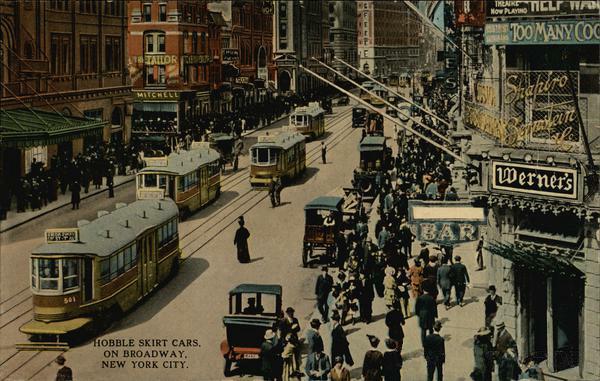
Indicative of women’s growing autonomy was the fact that when the new skirt widths were adapted they fought hard for public transportation access to be expanded to accommodate. Isabella Alden sites the change in the height of cable car steps over about a twenty-year period, coinciding with changes in skirt styles. When the hobble skirt emerged, so-called “hobble skirt cars” were introduced as middle cars on the line that required a mere six-inch step to board.
…And the powers that be fight back
Women exerting their power as members of society was met by disdain by those enjoying their privilege at the time, aka rich white men. Clothing was an easy target and satire mocking the hobble skirt was plentiful.
Over time I have lost a lot of the interest that I once had in historic satire targeting women. I think that it is really easy to forget that these images have intensely seeped sexism and that the media’s comfort with ridiculing women still today shows how little some things have changed. The satire of the hobble skirt does a great job in showing how effective women were becoming at making the status quo shift around them, so I have chosen a few of my “favorite” depictions.
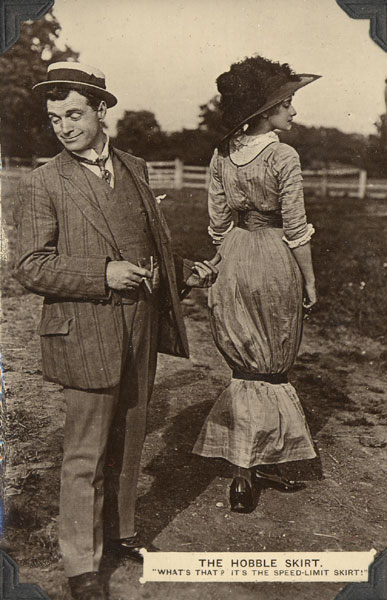
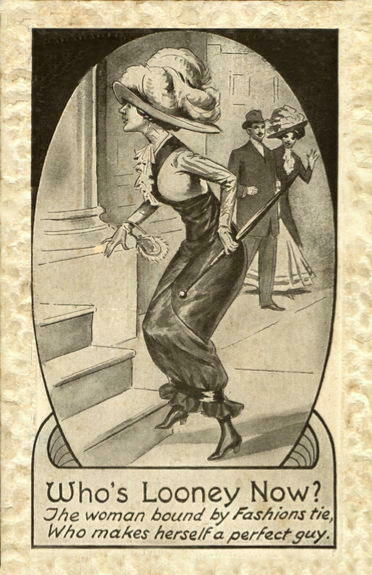
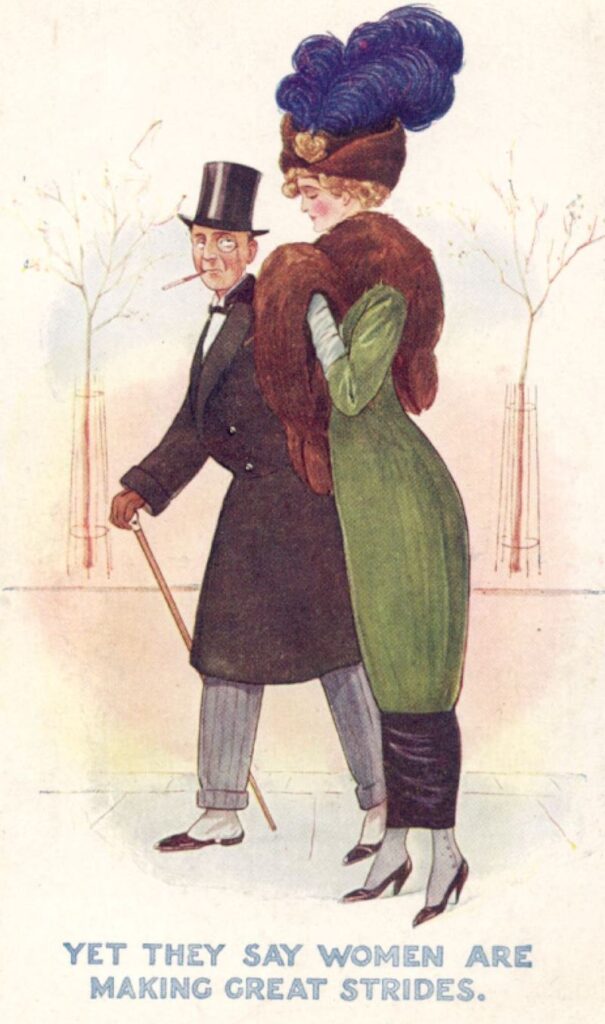
How extreme were they?
Now that you’ve seen the mockery you might be wondering how extreme the actual hobble skirts were. Well…some were pretty close to those being made fun of. See the following examples.
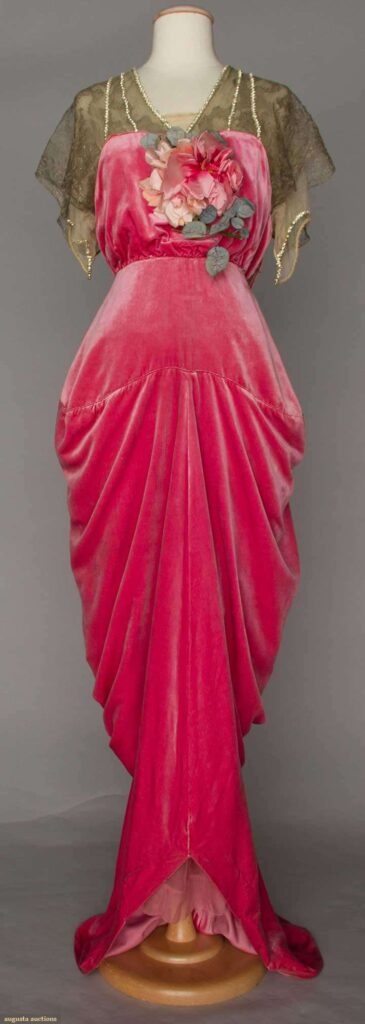
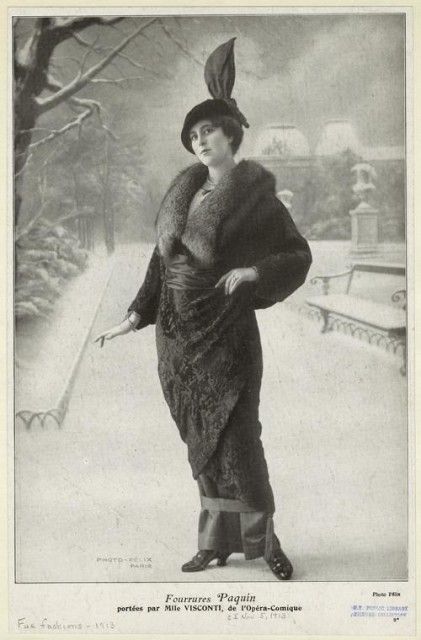
And some were a bit more reasonable…
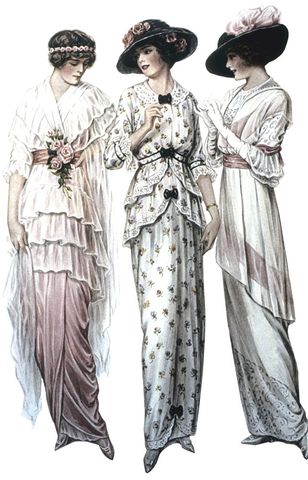
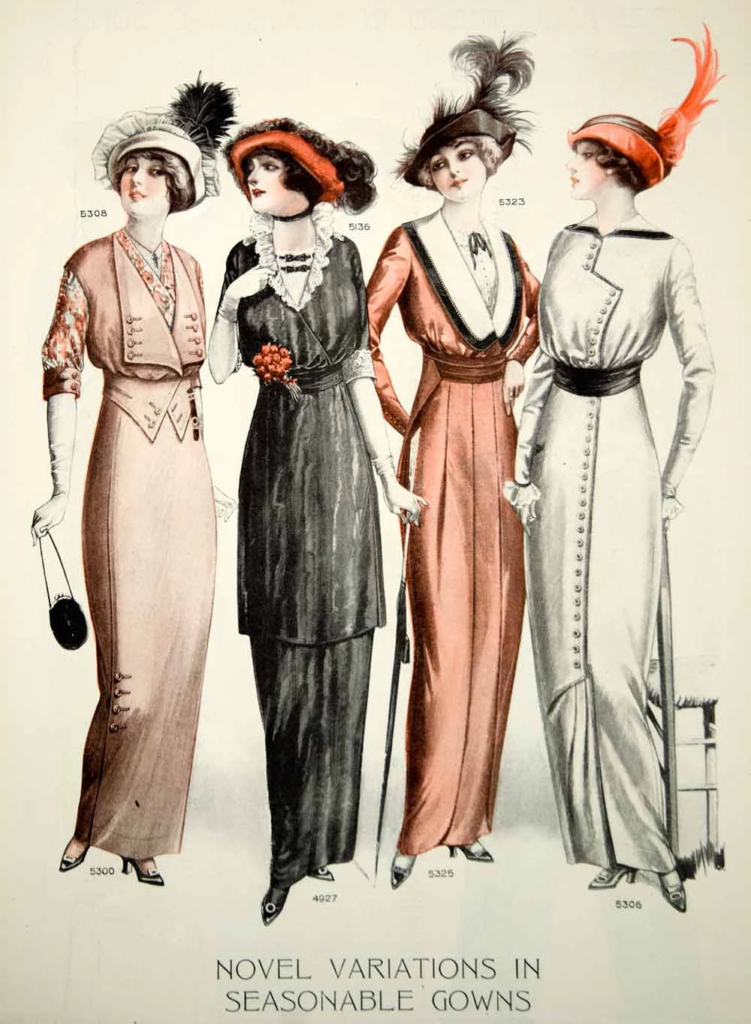
Women want to walk: the brief life of the Edwardian harem pant
Overall, the hobble skirt was just too difficult and dangerous to be more than a trial run. As they fail to take off we see Poiret’s willingness to adapt to the reality of women. He attempted the harem pant, famously depicted in season one of Downton Abby. But while some parts of society were ready to hobble, they were not ready for pants.
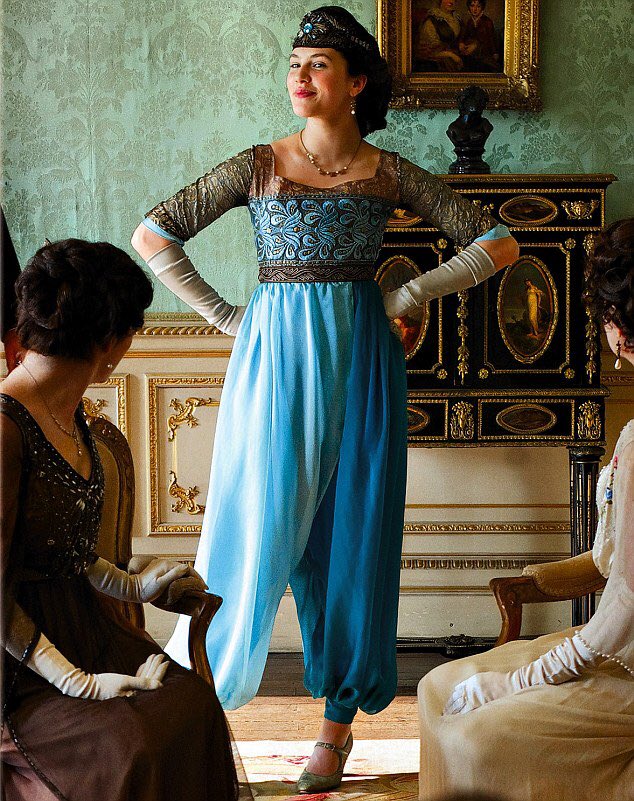
More Edwardian fashion fun:
Edwardian women fashion: morning, noon, and night
Go Big or Go Home: The Merry Widow Hat
Preparing for an Edwardian-themed event
Femininity in Question: Edwardian Depictions of the New Woman

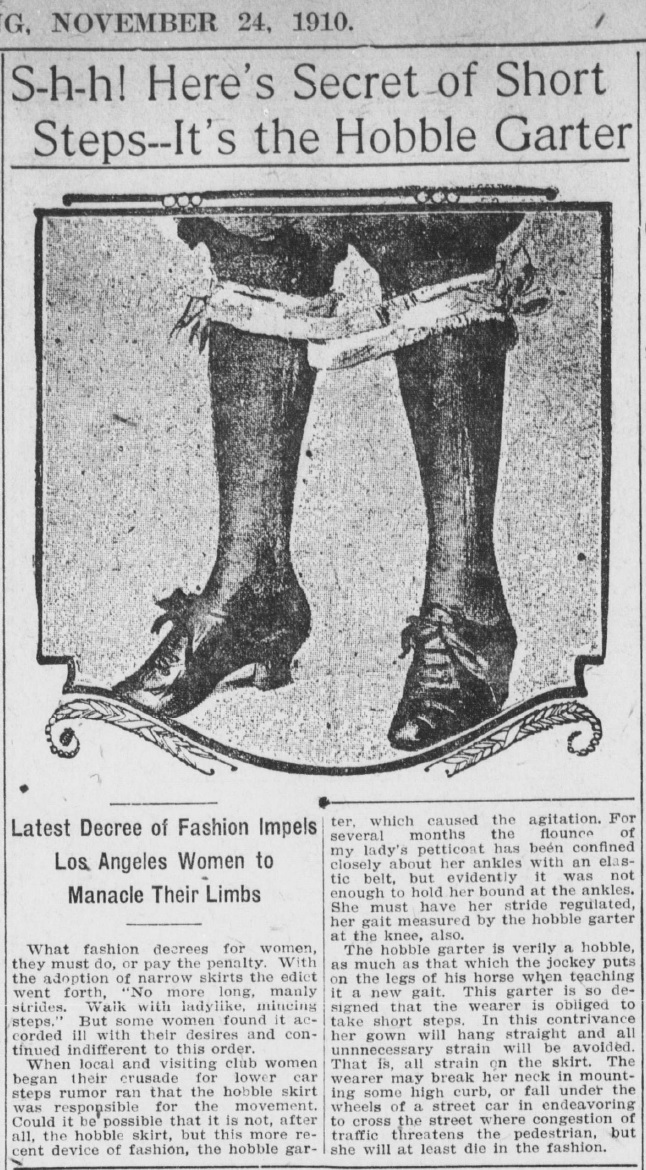
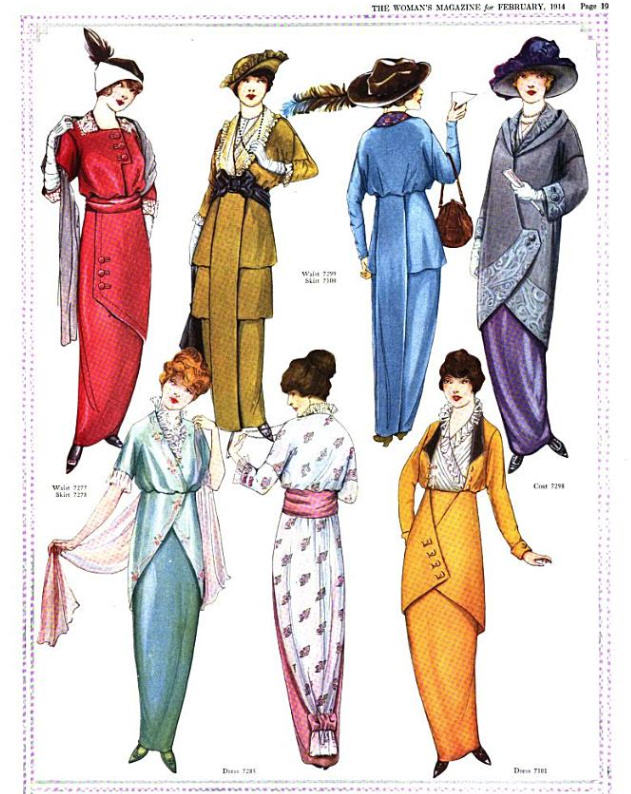







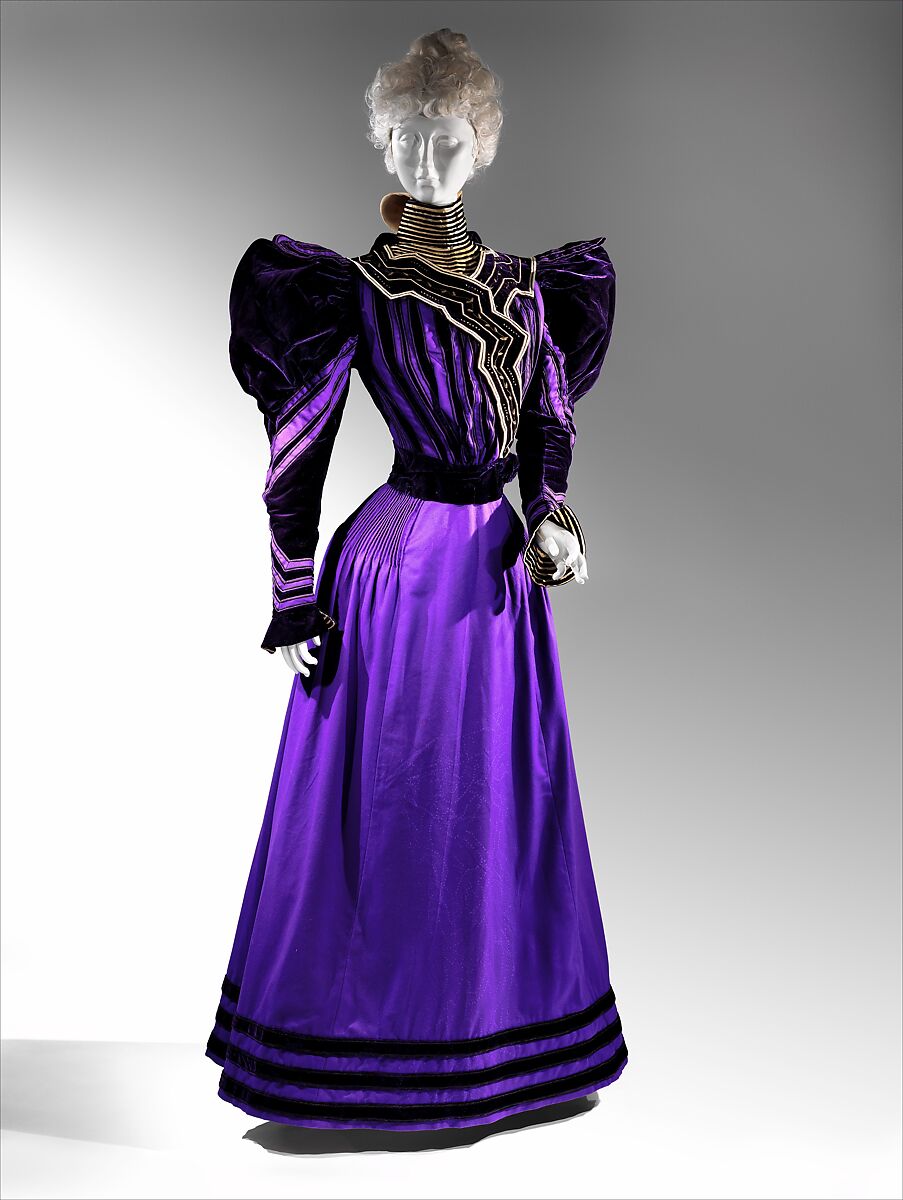


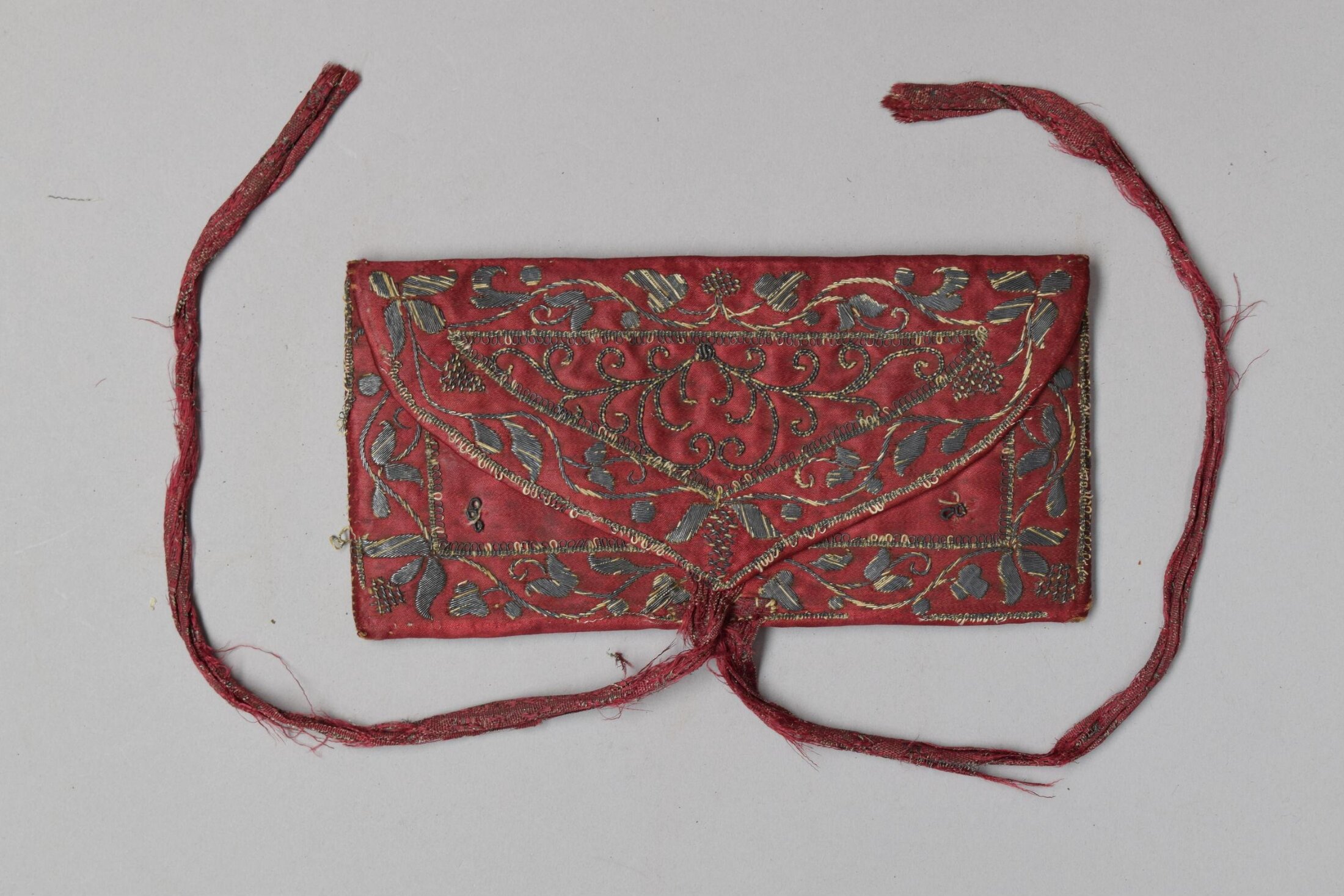
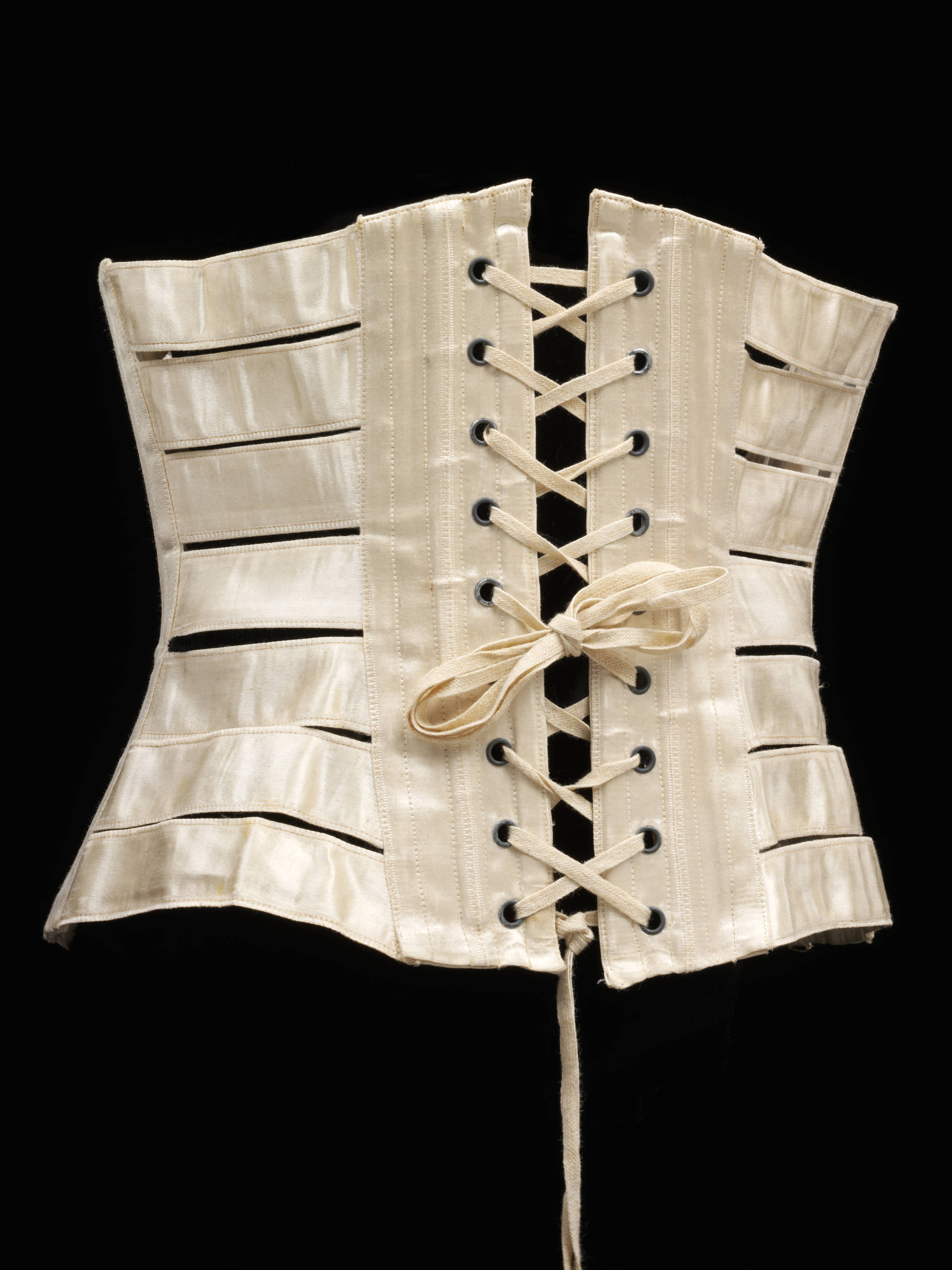
I’ve always loved to hobble skirt so it’s nice to see it get some attention..